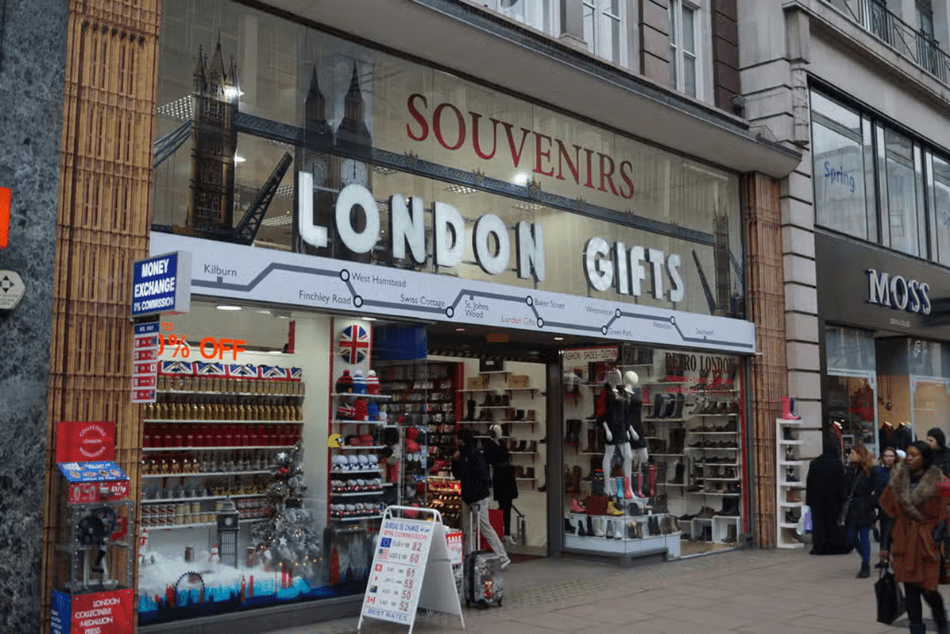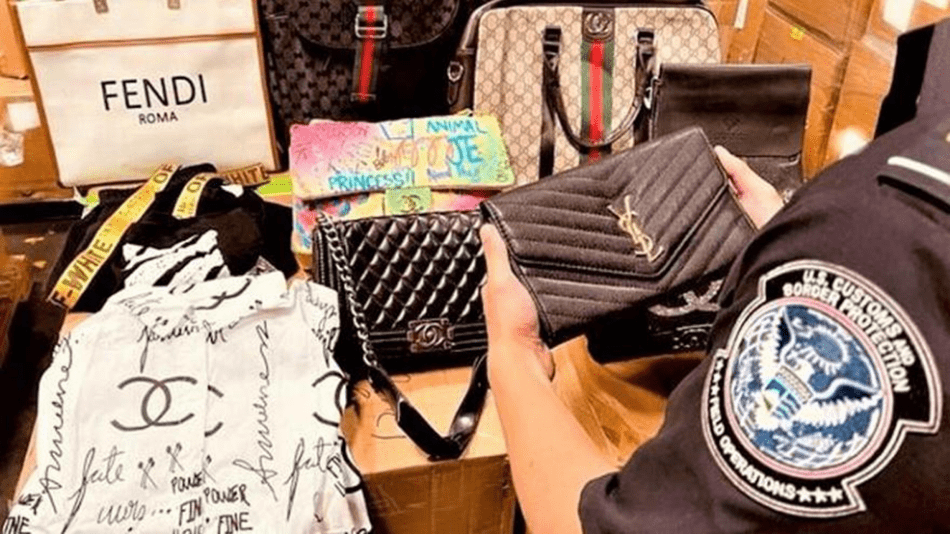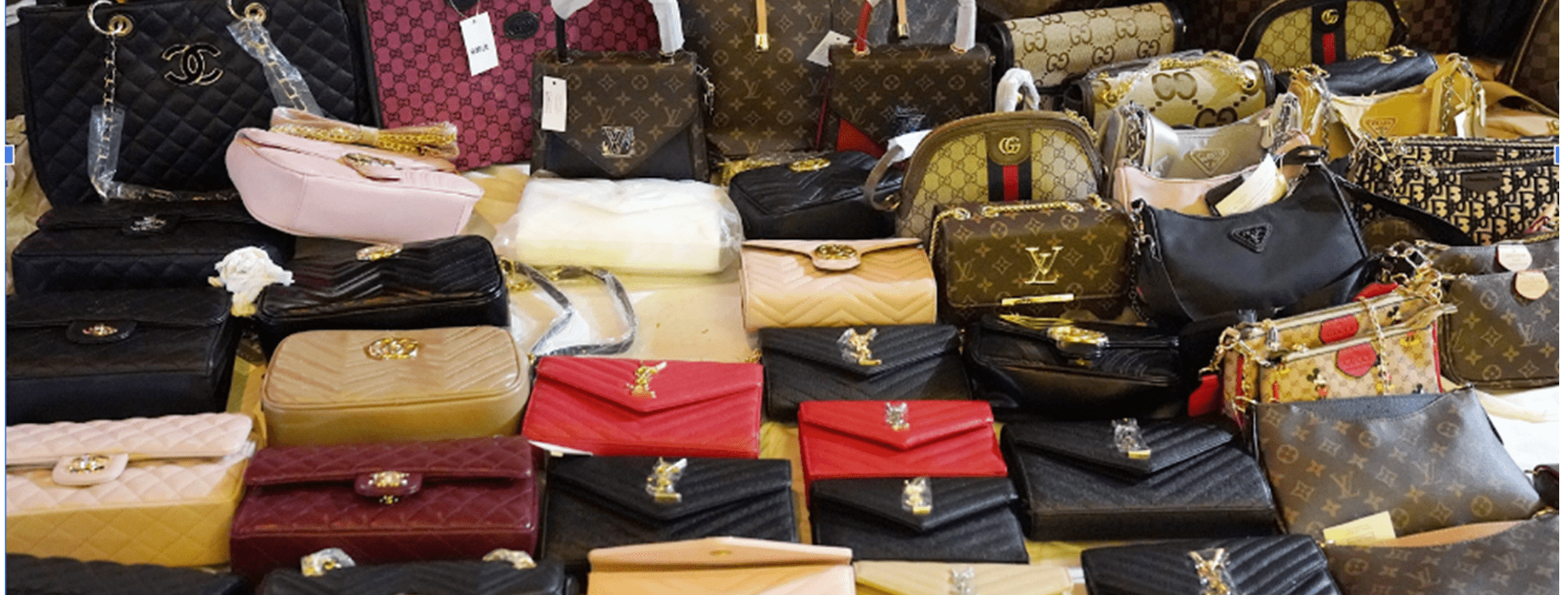Customer Success Story:
London’s chances of saving Oxford Street’s reputation given that low-end stores are rising and so is the proliferation of counterfeits and organized crime on this street.
The legendary shopping streets of NYC, Paris, Milan and London are flooded with counterfeit goods. It’s a major evolving problem. Counterfeits currently represent 3.3% of all global trade (USD 509 billion), and they threaten a large number of industries.
In just two decades, luxury counterfeit production alone has increased by 10,000% and today it’s estimated that up to 3 in 10 luxury purchases are fake, with nearly 80% of us having owned a fake luxury good unknowingly at some point in our lives. It costs the luxury retail industry $50 billion every year as a result, but while the bulk of that comes from online purchases, its emergence in some of the most famous High Streets in the world now presents a new challenge. These goods are becoming more sophisticated and harder-to-detect through standard checks, so we need to begin addressing it much more intelligently.
Take a counterfeit shipment of Levi’s jeans & t-shirts that our digital shipment vetting technology recently caught as an example: by detecting an abnormally low declared price for the goods, which was only made possible by utilizing multiple external sources to crosscheck similarly priced goods and identify the irregularity ahead of time, we were able to flag it. The same shipment would have bypassed today’s standard checks.

THE REAL COST OF FAKE LUXURY:
Goods ranging from luxury goods to high street clothing are embedded with risk. At the end of the day these are consumer goods – whether it’s clothing or electronic goods, once you’re talking about counterfeit goods that are manufactured without any standards or checks the sky’s the limit and you have no guarantees – at best these counterfeit versions are made poorly and at worst they can pose a safety and health hazard. Imagine children’s pajamas that are supposed to contain flame retardants or a fake apple watch with a battery component that can self-ignite. A new study shows that 36.2% of counterfeit fashion goods contains dangerous levels of chemicals and heavy metals.
In 2020, the LAPD seized USD 700,000 worth of counterfeit cosmetics, which included fake Anastasia, NARS, MAC, Urban Decay and Kylie Cosmetics that contained high levels of bacteria and animal waste, causing cases of severe acne, psoriasis, rashes, and eye infections. These are just a few examples of a wide and rampant problem we’re dealing with today.

There is also a very strong link between counterfeits and organized criminal syndicates. Counterfeit operations serve as an effective front for money laundering and other illegal trade practices that have drained around $4.2 trillion so far from the global economy.

Taking this to the high street, the many candy shops and souvenir stores that have popped up on streets that once were the epitome of style and class are the way these counterfeit goods are reaching brick and mortar retail and circulating the laundered money.
It’s also a sort of large-scale informal economy that exploits the legal economy at every turn, from exploiting the shipping trade to the abuse of vulnerable child workers in difficult socio-economic circumstances. And when you’re in the business of manufacturing and selling goods at the cheapest prices to exact the highest possible profits, the reality is that you’re more likely to be associated with violating the rights of the manufacturing labor force (e.g child labor). Using today’s standard checks, tracing sanctioned labor violations or goods tied to criminal syndicates is really difficult. In order to be able to gain visibility, authorities need to utilize all the powers of today’s digital sphere with smart data-driven approaches that can unearth insights that would otherwise go unnoticed. We recently identified a Uyghur internment camp escapee who fled China in 2019 and now shares Uyghur-related news on her Facebook profile and even shared evidence from within the factories of some of the biggest brands in the world. When you begin using newer and more tech driven methods to vet shipments, you start to see behind the murky supply chain.

THE SUPPLY CHAIN PATH

The supply chain is a long and winding road. Fake luxury items make their way into a country’s borders from manufacturing sites mostly in Asia through container ships to major ports including Europe, which estimated around 5% of all its imports were counterfeit. In 2021, the US estimated that 75% of its seized counterfeits came from China, where forgeries of luxury brands are more prevalent than any other country. These items move through a complex supply chain, involving multiple intermediaries and middlemen who may knowingly or unknowingly handle counterfeit products. These intermediaries help conceal the origin of the goods.
A big part of a successful counterfeit operation is concealing where production took place. Counterfeiters use the same established plants and sweatshops for production as known brands use, but without the trademark (sometimes produced ‘off-hours’ in the very same factory) and in regions where supply chain data is hard to come by. Counterfeiters often replicate packaging, labels, logos and branding to make their products appear genuine.
Fake items are then loaded onto legal trade shipments with false declarations, for which origin fraud is a common method for evasion. Origin fraud is a method by which the origin of where the goods come from is falsely declared in order to evade sanctions or enjoy more appealing tax rates of another country. We recently tracked a shipment declared as originating in Italy (0% tax rate), but after analyzing the shipper’s history, we found they had no history of dealing in Italy but had traded similar goods with India, which has a much higher tax rate (40%). Once these goods reach major EU ports, they are unloaded alongside legitimate cargo. Due to the high volume of shipments, customs authorities may not be able to inspect every container thoroughly.
Once you start to dig into the cases, it becomes really clear why there is an abundance of fraud within the supply chain and why it’s complicated to untangle it with today’s standard Customs checks.
WHY ISN’T THIS STOPPED?

Nobody openly declares that they’re importing cheap knock-offs. So counterfeiters use common customs fraud practices of misdeclaration and misclassification of goods to get past today’s customs checks. Misdeclaration is when imported goods are overtly declared as something they’re not. It can be something as glaring as a container of Gucci bags being declared as a container of rice. Misclassification is when importers use inadequate or manipulated HS codes to present a legitimate declaration form that’s just slightly off. Think of a container of Gucci bags being declared as just, leather bags. These tactics cost customs almost $22 billion a year in lost revenues.
Part of the difficulty for authorities like the HMRC is that only 1% of all traded goods are actually physically inspected. Since the percentage is that small, the majority of their efforts are going to be focused on using their limited data to flag more blatant fraud, rather than containers that seem legitimate apart from a small change in HS code classification, making it relatively easy to get counterfeit goods past border checks, even in the most advanced countries. Standard checks are still mostly limited to analyzing just the shipper or importer directly involved, alongside a basic goods analysis. With luxury counterfeits items, especially the ones that look almost identical to the real thing, you need much more transparency into other connected actors and earlier stages of the supply chain, as well as more refined inspection of the good’s properties to detect the irregularity. Items like drugs also sit much higher on the priority list of customs agents, who are more equipped to inspect & detect narcotics than identical ‘Gucci’ bag duplicates.
A NEW TECHNOLOGY UTILIZING ARTIFICIAL INTELLIGENCE IS HELPING CUSTOMS AGENCIES FIGHT BACK
AI-driven shipment vetting technology now makes it possible for customs agencies who were only checking 1% of cargo, to essentially check 100% of cargo.
This new way of digitally inspecting shipments provides full and comprehensive supply chain visibility to flag origin fraud, misdeclared and misclassified shipments, forced labor and any other indicative fraud patterns that are typically associated with counterfeit goods, to enable customs to fight back and stop them from infiltrating the consumer chain.
It has been pretty much impossible to check every product coming in – leaving the door wide open for customs fraud. But now, we are able to close the gap by collecting real-time digital information and analyzing it, enabling a new level of insight and automation. In different countries importers lie about different things (origin of goods, quality of goods and the nature of goods), but this technology has a global impact. And so, when customs import declarations are analyzed using digital shipment vetting technology, we can tell if there is a risk of counterfeit fraud without touching the container.
Get in touch
-
21 Soho Square London W1D 3QP, UK



